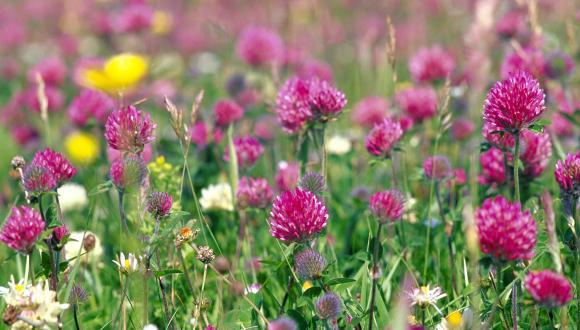Caledonian pinewood
Scotland’s only native coniferous forests have suffered centuries of decline. Some recovery of Caledonian pinewoods has occurred, especially in Strathspey.
Caledonian pinewoods – which link us to the vast boreal forests elsewhere around the world – occur on thin, infertile, mineral soils across Scotland.
Scots pine almost wholly dominates many of our pinewoods in the cold, dry east. Pinewoods in the milder, more humid west often feature much more diverse canopies, which include birch, rowan, alder, willow, holly and hazel.
An ancient, wide-crowned ‘granny’ pine, standing alone in heather moorland, is an iconic feature of the Scottish landscape. But these majestic trees may be the last remnants of a previously wooded area. Burning and grazing may have caused the trees to be unable to regenerate for centuries.
In some areas, especially Strathspey, reductions in deer numbers have allowed seedlings to grow and some pinewood expansion to occur.
Native pine woodlands are included on the Scottish Biodiversity List.
They’re also protected under the European Habitats Directive.
Other flora and fauna
Pinewoods aren’t very diverse in their plant and animal life compared to some more fertile woodland types such as lowland oakwoods or ashwoods. But they do support characteristic species that occur nowhere else. This includes birds such as capercaillie, black grouse and Britain’s only endemic species of bird, the Scottish crossbill.
Less obvious but equally fascinating species found in pinewoods include the wood hedgehog and other tooth fungi. Members of this curious group have teeth instead of gills on the underside of their caps. Find out about Scotland’s rare tooth fungi on the Plantlife website.
Acid-tolerant plants like bell heather, blaeberry and crowberry often dominate the ground flora. More delicate flowers grow alongside, like:
- lesser twayblade
- creeping lady’s-tresses
- intermediate wintergreen
- one-flowered wintergreen
- twinflower
Old or dead trees and rotting wood support many rare insects, like the specialist hoverfly Callicera rufa, which lays its eggs in rot holes in old pines.
Explore Scotland’s pinewoods
Some of the best areas of native pinewood are protected on National Nature Reserves (NNRs).
Learn about the native pinewoods on:
- Loch Fleet NNR – the pines of Balblair Wood were planted after a severe storm flattened a previous pinewood in 1905
- Beinn Eighe and Loch Maree Islands NNR – one of our most ancient and least disturbed fragments of native pinewood
- Glen Affric NNR – one of Scotland’s largest remaining ancient pinewoods
- Abernethy NNR – Britain’s largest native Scots pinewood
- Glen Tanar NNR
- Invereshie and Inshriach NNR
- Glenmore NNR






